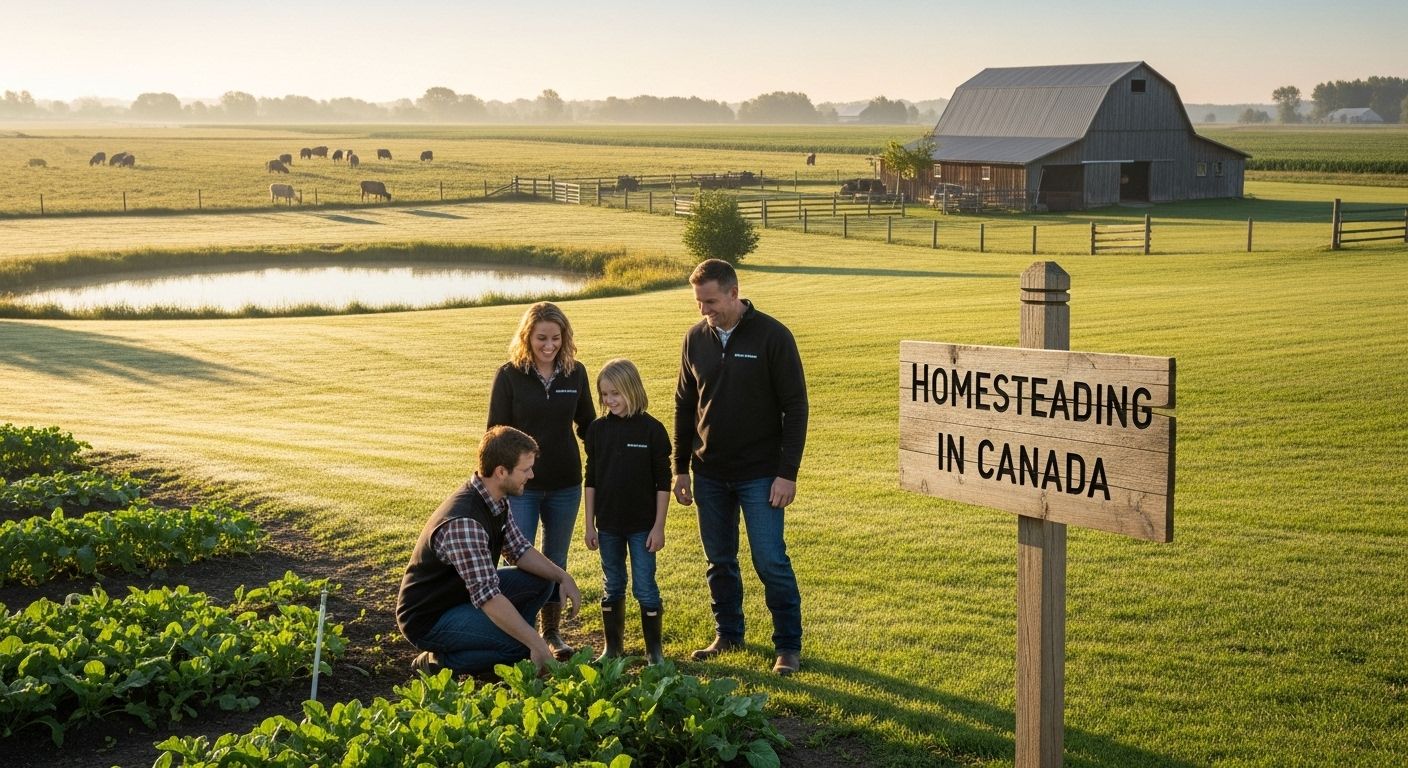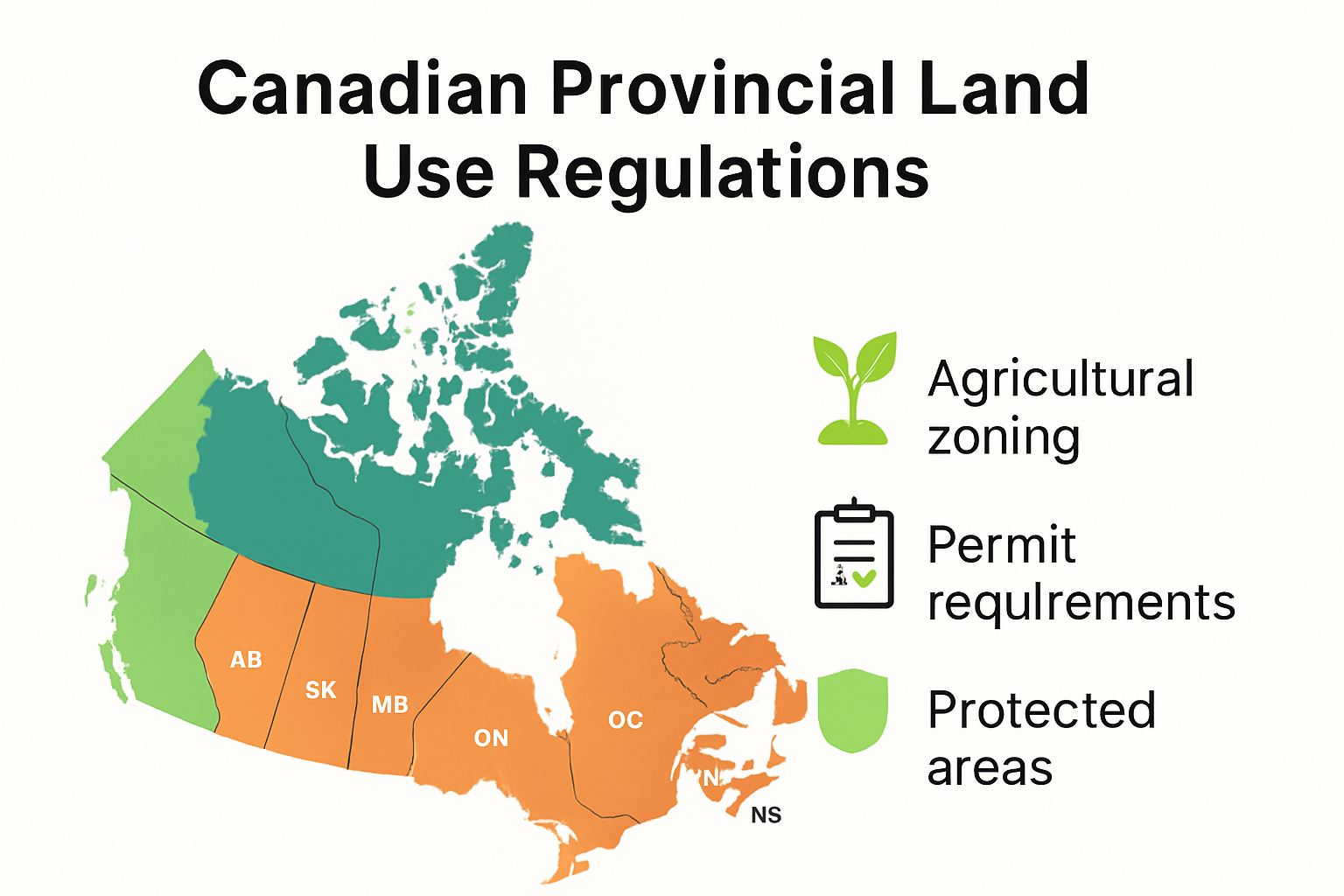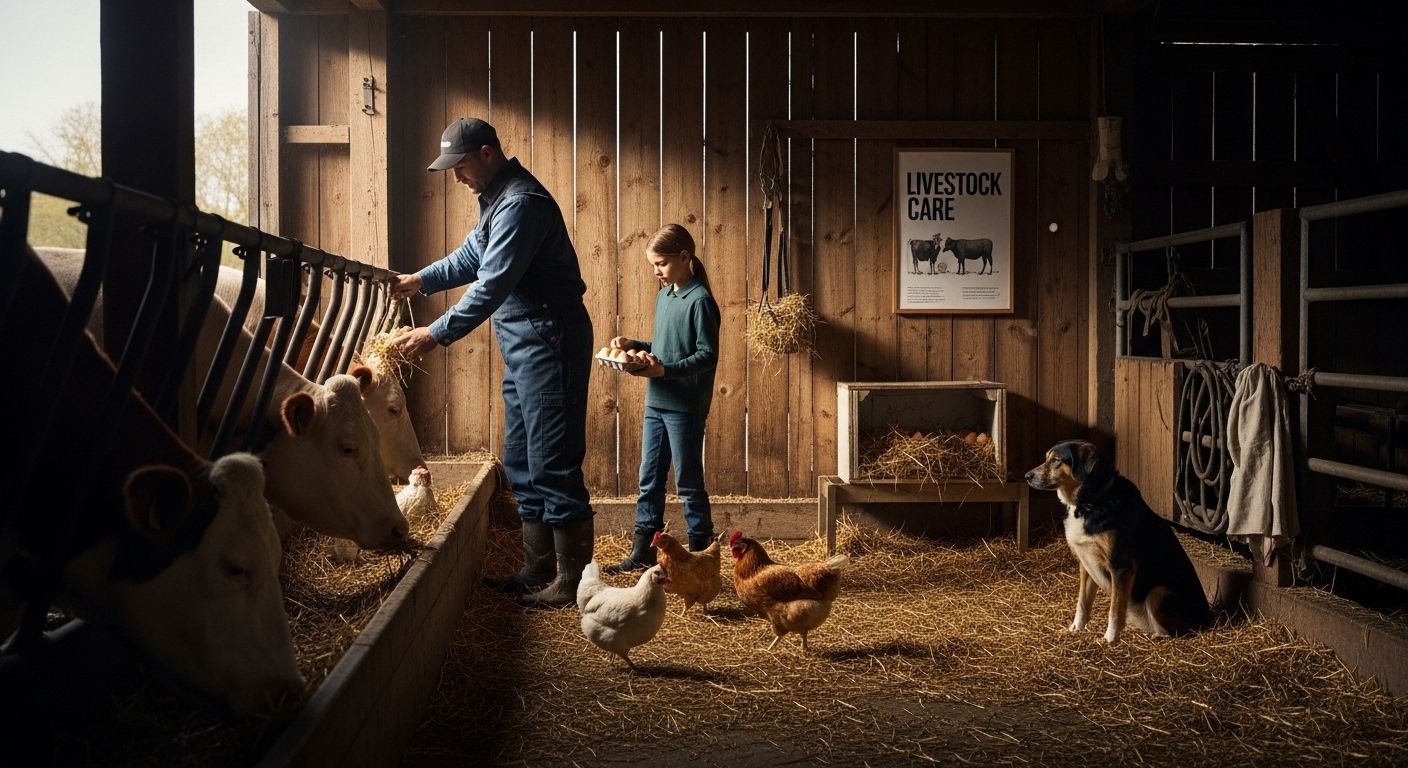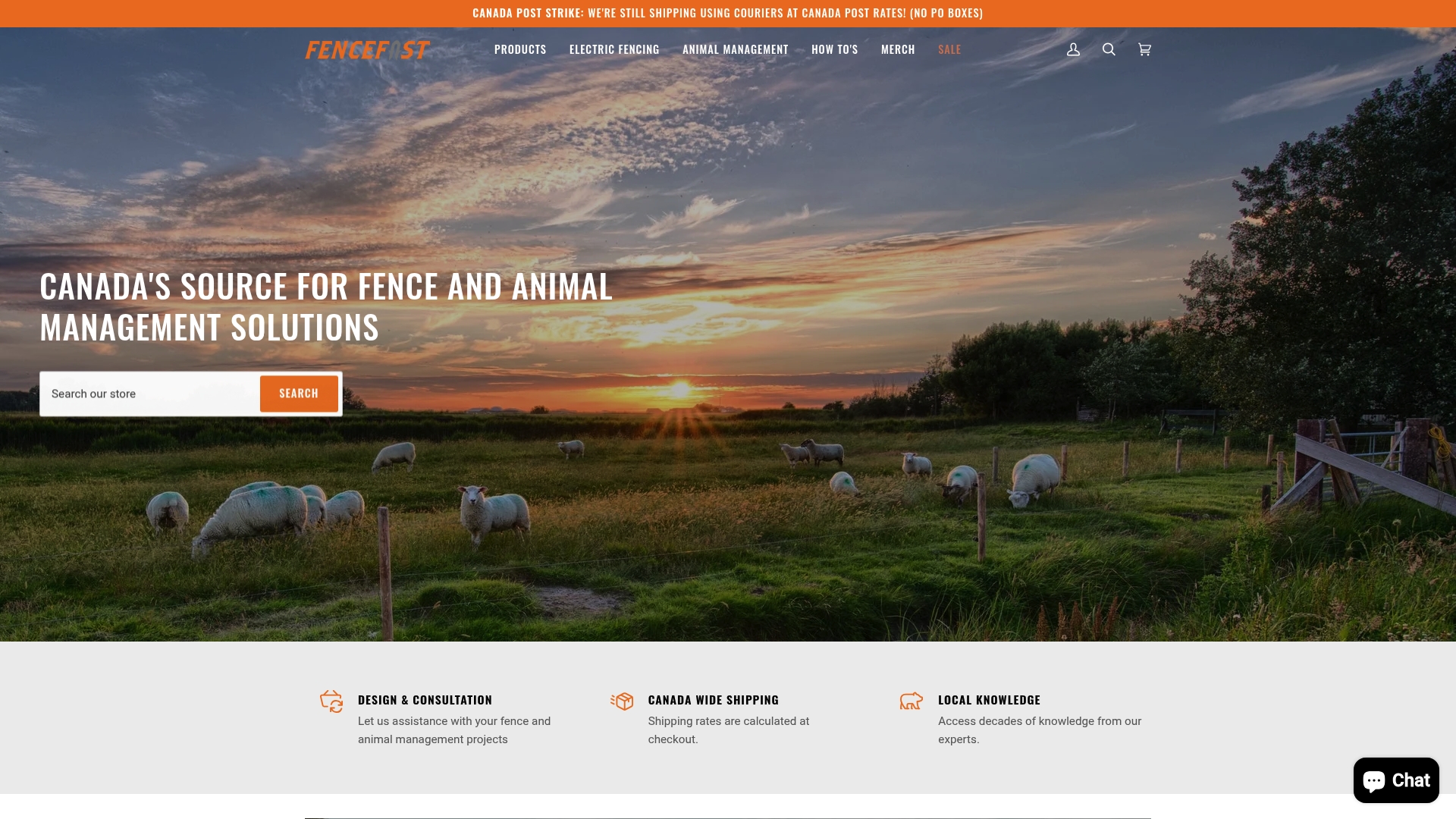
Dreaming of a rural escape where you live off the land and build something lasting? Over 80 percent of Canada’s land is made up of rural and remote areas, offering millions of acres with untapped potential for homesteading. Most people picture this lifestyle as nothing but constant struggle and backbreaking work. In reality, some simple planning and the right know-how can turn a patch of bare ground into a thriving, sustainable homestead faster than you might believe.
Table of Contents
- Choosing The Right Land For Homesteading
- Legal Requirements And Land Use In Canada
- Essential Skills And Tools For Homesteaders
- Tips For Successful Farming And Livestock Care
Quick Summary
| Takeaway | Explanation |
|---|---|
| Evaluate Land Resources Carefully | Assess soil quality, climate, and accessibility which are vital for agricultural success. |
| Understand Legal Regulations | Familiarize yourself with provincial land use laws and environmental compliance for sustainable practices. |
| Master Essential Homesteading Skills | Develop skills in crop management, food preservation, and mechanical proficiency to thrive in rural living. |
| Focus on Livestock Health Management | Address animal nutrition and preventative care to maintain a productive and healthy livestock environment. |
| Implement Sustainable Grazing Practices | Utilize rotational grazing techniques to ensure pasture recovery and promote ecological balance on your homestead. |
Choosing the Right Land for Homesteading
Selecting the perfect land for homesteading represents one of the most critical decisions a rural property owner will make. The success of your agricultural venture hinges on careful evaluation of multiple factors that extend far beyond simple acreage.
Assessing Land Potential and Resources
Understanding the intrinsic characteristics of your potential homestead is fundamental to long-term success. The University of Florida’s Institute of Food and Agricultural Sciences emphasizes the importance of comprehensive land assessment. This process involves detailed examination of several key elements that will determine your property’s viability.
Soil Quality and Composition
Soil represents the foundation of any successful homestead. Professional soil testing provides critical insights into nutrient levels, pH balance, and agricultural potential. Different crops and livestock require specific soil conditions. Sandy loam soils typically offer excellent drainage and nutrient retention, making them ideal for diverse agricultural activities. Clay-heavy soils might require amendment to improve drainage and support robust plant growth.
Climate and Growing Conditions
The National Park Service research highlights the profound impact of regional climate on homesteading success. Understanding your specific microclimate involves analyzing several crucial factors:
- Growing Season Length: Determines which crops can be successfully cultivated
- Average Annual Rainfall: Critical for understanding water availability
- Temperature Ranges: Influences crop selection and livestock management
Homesteaders must consider local frost dates, precipitation patterns, and seasonal temperature variations. These environmental factors directly impact agricultural planning and sustainable food production strategies.
Infrastructure and Accessibility Considerations
Beyond natural resources, practical infrastructure plays a pivotal role in homesteading viability. Evaluate existing features like water sources, potential building sites, natural windbreaks, and accessibility. Proximity to essential services, while maintaining rural privacy, creates a balanced homesteading environment.
Water access represents a non-negotiable requirement. Look for properties with:
- Reliable Water Sources: Wells, streams, or municipal water connections
- Potential Irrigation Systems: Natural or installable water distribution methods
- Drainage Characteristics: Ensuring proper water management and flood prevention
Additionally, consider topographical features. Gently sloping land often provides better drainage and more diverse agricultural opportunities compared to completely flat or extremely rugged terrain.
To help you assess whether a particular plot of land is suitable for homesteading, here is a summary table outlining key land features and their importance as discussed in this section:
| Land Feature | Importance |
|---|---|
| Soil Quality and Composition | Determines crop suitability, drainage, and nutrient management |
| Reliable Water Sources | Critical for irrigation, livestock, and household needs |
| Drainage Characteristics | Affects flood risk and water management |
| Climate and Growing Season Length | Influences types of crops and livestock viability |
| Accessibility and Proximity to Services | Balances rural privacy with ease of accessing necessities |
| Topography (Slope and Terrain) | Impacts drainage, building suitability, and agricultural diversity |
Choosing the right land demands patience, research, and a strategic approach. Your homestead is more than a property it is the foundation of your agricultural dreams and sustainable lifestyle. Take time to thoroughly investigate potential sites, consult local agricultural experts, and align your vision with the land’s inherent capabilities.
Legal Requirements and Land Use in Canada
Navigating the legal landscape of land ownership and use in Canada requires a comprehensive understanding of complex regulatory frameworks that govern rural property development and agricultural operations. Homesteaders must carefully consider multiple legal dimensions to ensure compliance and sustainable land management.
Provincial Land Use Regulations
Farmland protection policies across Canadian provinces demonstrate significant variations in legislative approaches to agricultural land preservation. Each province maintains distinct regulations that impact how landowners can develop and utilize their property. Understanding these nuanced legal requirements becomes crucial for successful homesteading.

Zoning laws represent a critical component of land use regulation. Municipalities typically define specific zones for agricultural, residential, and commercial purposes. Homesteaders must verify their intended land use aligns with local zoning classifications. This might involve obtaining special permits or seeking rezoning approvals for specific agricultural activities.
Environmental Compliance and Protection
Canadian entrepreneurs must navigate a complex regulatory environment that prioritizes environmental protection. Homesteaders need to understand several key legal obligations:
- Water Resource Management: Regulations governing water extraction, drainage, and conservation
- Soil Conservation: Guidelines protecting against erosion and maintaining ecological balance
- Wildlife Habitat Protection: Restrictions on land use that might impact local ecosystems
Environmental assessments often become mandatory when developing previously undisturbed land. These evaluations ensure that agricultural activities do not compromise local biodiversity or ecological integrity. Professional environmental consultants can help homesteaders navigate these complex requirements.
Indigenous Land Rights and Considerations
Canadian land use laws incorporate critical considerations regarding Indigenous territorial rights. Homesteaders must recognize and respect potential Indigenous land claims or traditional territories. This involves:
- Researching historical land use agreements
- Consulting local Indigenous communities
- Understanding potential land claim implications
- Respecting traditional territorial boundaries
Additionally, some regions require consultation or collaboration with Indigenous groups when developing rural properties. Proactive engagement demonstrates respect and can prevent potential legal complications.
Successful homesteading in Canada demands more than agricultural skill. It requires a nuanced understanding of legal frameworks, environmental regulations, and local community dynamics. Prospective landowners should invest time in comprehensive research, potentially consulting legal professionals specializing in agricultural and rural property law.
By approaching land ownership with respect for legal requirements and environmental stewardship, homesteaders can create sustainable, compliant, and thriving agricultural operations that contribute positively to Canada’s rural landscape.
Essential Skills and Tools for Homesteaders
Successful homesteading demands a diverse set of skills and strategic tool selection that extend far beyond traditional agricultural knowledge. Mastering these competencies transforms rural living from a challenging endeavor into a sustainable and rewarding lifestyle.
Agricultural and Crop Management Skills
Cornell Cooperative Extension highlights the critical importance of comprehensive agricultural skills for aspiring homesteaders. Understanding soil preparation, seed selection, and advanced planting techniques form the foundational knowledge required for successful crop production.
Key agricultural skills include crop rotation planning, understanding companion planting strategies, and developing resilient growing techniques that adapt to local climate conditions. Homesteaders must learn to read soil conditions, recognize plant health indicators, and implement sustainable farming practices that maintain long-term land productivity.
Food Preservation and Processing Techniques
Alamance Community College’s farm-to-table program emphasizes the critical role of food preservation in homesteading success. Mastering preservation techniques ensures food security and reduces dependency on external food sources. Essential skills include:
- Canning: Safely storing fruits, vegetables, and prepared meals
- Dehydration: Preserving herbs, fruits, and meats
- Fermentation: Creating probiotic-rich foods like pickles and yogurt
- Freezing: Maintaining nutritional value of harvested produce
These techniques not only extend food longevity but also provide opportunities for value-added product creation and potential small-scale marketing.
Technical and Mechanical Proficiency
Oregon State University’s Small Farms research underscores the importance of mechanical skills in homesteading. Successful homesteaders must develop proficiency in equipment maintenance, basic construction, and improvised problem-solving.
Critical technical skills include:
- Basic machinery repair
- Welding and metal fabrication
- Carpentry and structure maintenance
- Electrical system understanding
- Equipment modification and adaptation
The ability to repair, modify, and create tools becomes as valuable as the tools themselves. Homesteaders who can design small-scale processing equipment or repair critical infrastructure dramatically increase their operational resilience.
Below is a comparison table summarizing key aspects of three core homesteading skill sets—agricultural, food preservation, and technical skills—to help aspiring homesteaders focus their learning:
| Skill Area | Core Competencies | Why It Matters |
|---|---|---|
| Agricultural | Soil prep, crop rotation, companion planting, plant health | Maintains productive crops and adapts to climate conditions |
| Food Preservation | Canning, dehydration, fermentation, freezing | Ensures food security and reduces external dependency |
| Technical/Mechanical | Equipment repair, carpentry, welding, basic electrical | Increases self-reliance and operational resilience |
Beyond technical abilities, homesteading requires mental adaptability. Learning from failures, remaining flexible, and continuously expanding skill sets separate successful homesteaders from those who struggle. Continuous education through workshops, online resources, and community networks provides ongoing opportunities for skill development.
Investing time in developing these comprehensive skills transforms homesteading from a romantic notion into a practical, sustainable lifestyle. The journey requires patience, persistence, and a genuine commitment to lifelong learning and self-sufficiency.
Tips for Successful Farming and Livestock Care
Livestock management represents a critical component of successful homesteading, requiring a holistic approach that balances animal welfare, productivity, and sustainable agricultural practices. Understanding the nuanced needs of farm animals transforms livestock from mere resources into integral partners in your homesteading ecosystem.
Livestock Health and Nutrition Management
The Canadian Agricultural Partnership emphasizes the importance of comprehensive health management for farm animals. Developing a proactive health strategy involves several critical considerations:
- Preventative Care: Regular veterinary check-ups and vaccination protocols
- Nutritional Planning: Balanced diet specific to each animal species
- Genetic Diversity: Careful breeding selection to maintain herd health
- Stress Reduction: Creating comfortable living environments
Nutrition plays a fundamental role in livestock productivity. Homesteaders must understand the specific dietary requirements of different animal species, considering factors like age, reproductive status, and intended purpose (meat, dairy, fiber production).
Sustainable Pasture and Grazing Management
Agriculture Canada’s Sustainable Farming Practices Guide highlights the critical importance of strategic pasture management. Effective grazing systems involve more than simply allowing animals to roam. Key strategies include:
- Rotational grazing techniques
- Pasture rest and recovery periods
- Soil health maintenance
- Biodiversity preservation
- Water source management
Rotational grazing prevents overgrazing, allows pasture regeneration, and promotes more even nutrient distribution. This approach supports both animal health and long-term land sustainability.
Animal Housing and Infrastructure
Proper animal housing goes beyond simple shelter. It requires creating environments that support animal health, comfort, and natural behaviors. Critical considerations include:
- Adequate ventilation
- Protection from extreme weather
- Appropriate space requirements
- Clean and dry living conditions
- Separate areas for feeding, resting, and waste management
Each livestock species has unique housing requirements. Chickens need different infrastructure compared to cattle or sheep. Understanding these specific needs ensures animal welfare and maximizes productive potential.
Successful livestock management demands continuous learning and adaptability. Homesteaders must remain observant, willing to adjust strategies, and committed to ongoing education. Local agricultural extension services, veterinary professionals, and experienced farmers provide invaluable resources for developing comprehensive livestock care skills.
Remember that successful farming is a holistic practice. Animals are not just production units but living beings that contribute to the entire homestead ecosystem. Treating them with respect, providing excellent care, and understanding their natural behaviors creates a sustainable and productive agricultural environment.

Frequently Asked Questions
What should I consider when choosing land for homesteading in Canada?
When selecting land for homesteading, evaluate factors such as soil quality, climate and growing conditions, accessibility, and available water sources. These elements are crucial for agricultural success and determining the viability of your homestead.
What legal regulations do I need to be aware of for homesteading in Canada?
Understanding provincial land use regulations, environmental compliance, and Indigenous land rights is essential for homesteaders in Canada. This includes zoning laws, water resource management, and potential requirements for public consultations.
What essential skills do I need for successful homesteading?
Key skills for successful homesteading include agricultural and crop management, food preservation techniques, and technical proficiency with tools and machinery. Mastering these skills enhances sustainability and productivity on your homestead.
How can I manage livestock health effectively on my homestead?
Effective livestock health management involves implementing a preventative care strategy, maintaining balanced nutrition specific to each species, ensuring proper housing, and using rotational grazing practices to promote animal well-being and productivity.
Secure Your Homestead with Trusted Fencing and Animal Management Solutions
As you plan your Canadian homestead, you know how vital it is to ensure reliable fencing, secure animal enclosures, and effective livestock care. The article spotlights common pain points like finding durable fencing, sourcing the right animal monitoring tools, and protecting your investment from both harsh climates and wildlife. Building a thriving rural property means choosing products you can count on for lasting performance and peace of mind.

Ready to prevent fence breaks, keep livestock safe, and simplify management challenges? Discover how FenceFast.ca brings you proven fencing solutions, electric fencing systems, and practical animal health tools for every species from cattle to poultry. Shop our catalog today and speak with our design consultants for expert guidance tailored to your land and animals. Take the next step toward a resilient, well-managed homestead by visiting FenceFast.ca now.
Recommended
-
[
Gate Wheel – FenceFast Ltd.
-
[
Corral One-Hand Drop Aid – FenceFast Ltd.
-
[
Corral T-Post Rope Corner Insulator 4/pkg – FenceFast Ltd.
](https://fencefast.ca/products/corral-t-post-rope-corner-insulator-4-pkg)
-
[
Gallagher S200 Portable Solar Fence Energizer 2.0 joules – FenceFast Ltd.
](https://fencefast.ca/products/gallagher-solar-fence-energizer-s200)
